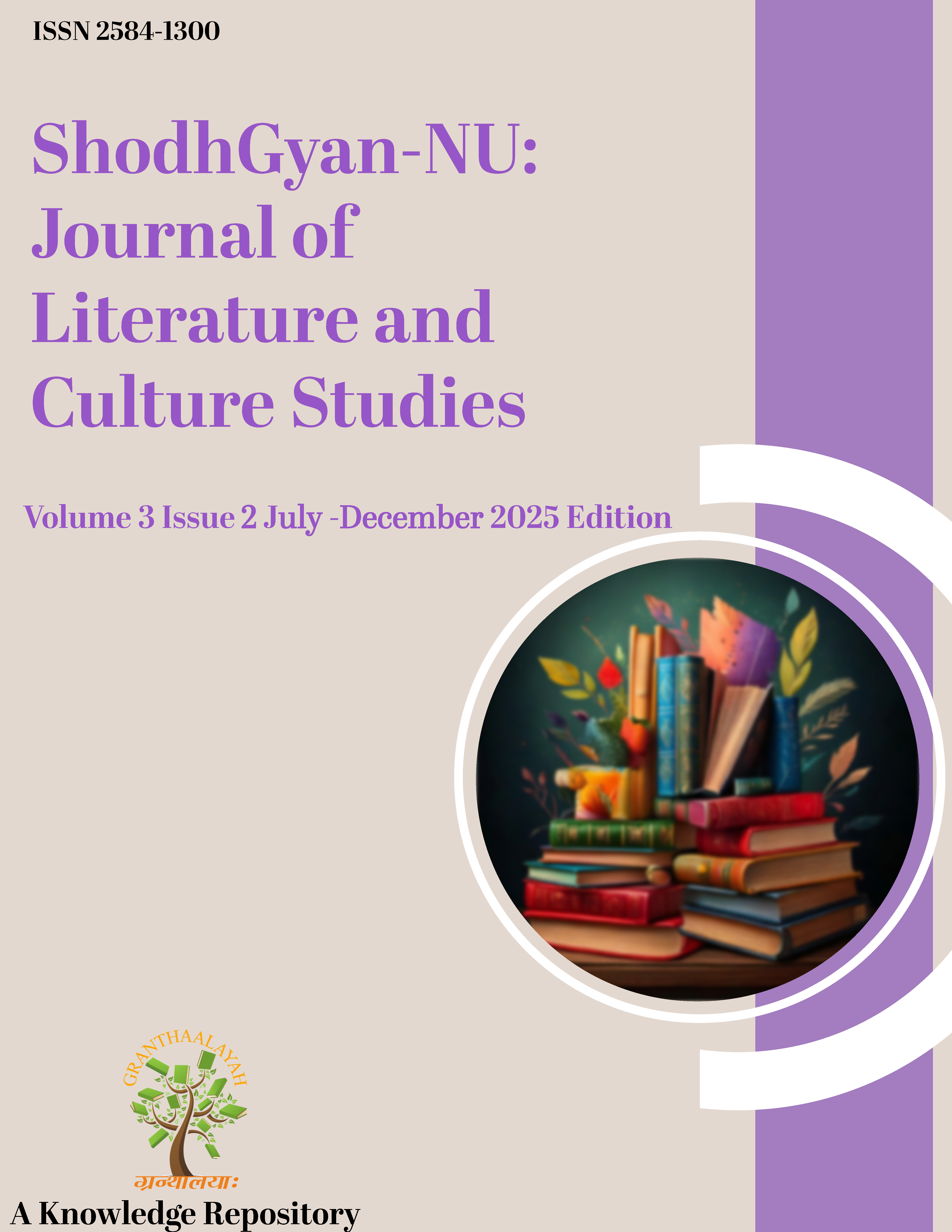THE INHERITANCE OF PAIN BETWEEN DAUGHTERS AND MOTHERS IN MANJU KAPUR’S DIFFICULT DAUGHTERS
DOI:
https://doi.org/10.29121/shodhgyan.v3.i2.2025.57Keywords:
Feminism, Female Autonomy, Generational Conflict, Mother-Daughter, Mother-Daughter Relationships, Personal and National Struggles, Emotional and Psychological Toll, Indian IndependenceAbstract [English]
Difficult Daughters by Manju Kapur explores the feelings and psychological issues experienced by three generations of women in India Kasturi, Virmati, and Ida, who are striving to cope with the vagaries of personal freedom and the demands of the society and family. The novel touches the theme of generational conflicts inside their family, the battles of female independence, and the national situation of independence. In the face of such assertion of independence, the characters are faced with both individual and social obstacles resulting in emotional and psychological crisis. This paper analyzes how Kapur employs these struggles to show us the prices of freedom and self-realization in a patriarchal society, which illuminates the intersections of individual desires, cultural change and the legacy of generational pain. Finally, the novel highlights the uncertainties that women have to go through in their pursuit of independence as individuals and a nation.
References
Agrawal, B. R. (2004). Manju Kapur: A Critical Study (1st ed.). Vikas Publishing House.
Chakravarty, M. (2012). Matrilineal Perspectives in Manju Kapur’s Difficult Daughters.
Doley, D. K. (2011). Partition Trauma, Nostalgia, and rootlessness: A Reading of Manju Kapur’s Difficult Daughters. Drishti: The Sight, 268.
Jyothi, B. D., & Gorak, S. (2018). Transforming Women's Image in Manju Kapur's Difficult Daughters.
Kahlon, M. (2011). Family Structure in Manju Kapur’s Difficult Daughters and Home. The Indian Review of World Literature in English, 7(2), 1–11.
Kapur, M. (1998). Difficult Daughters (1st ed.). Penguin Books India.
Kumari, P., & Dang, N. (2021). Narrative of Resistance: A Critical Study of Difficult Daughters by Manju Kapur. NIU International Journal of Human Rights, 8(3), 104–113.
Rao, P. A. (2015). Family Relationships & Gender Discrimination in Manju Kapur’s Difficult Daughters.
Rollason, C. (2006). A Subaltern Feminist Perspective in Difficult Daughters. In R. K. Sinha (Ed.), Indian literature and post-colonial theory (pp. 44–46). Oxford University Press.
Saraiya, S. N. (2010). Manju Kapur’s Difficult Daughters: A tale of Female Suppression and Subjugation.
Singh, J. (2015). Daughter Writes Back: A Study of Difficult Daughters. Language in India, 15(3).
Singh, V. (2010). The Quest for Identity in Difficult Daughters. In P. Kumar (Ed.), Feminist Readings of Indian Literature (pp. 165–170). Jaipur Publishing.
Sree, S. (2007). Feminism in Indian Literature: A Study of Select Novels (1st ed.). Sahitya Akademi.
Wani, M. A. (2022). Tradition Versus Modernity in Manju Kapur’s Debut Novel, Difficult Daughters. Galaxy International Interdisciplinary Research Journal, 10(2), 177–181.
Published
How to Cite
Issue
Section
License
Copyright (c) 2025 Aparna Kashyap, Dr. Richa

This work is licensed under a Creative Commons Attribution 4.0 International License.
With the licence CC-BY, authors retain the copyright, allowing anyone to download, reuse, re-print, modify, distribute, and/or copy their contribution. The work must be properly attributed to its author.
It is not necessary to ask for further permission from the author or journal board.
This journal provides immediate open access to its content on the principle that making research freely available to the public supports a greater global exchange of knowledge.




























